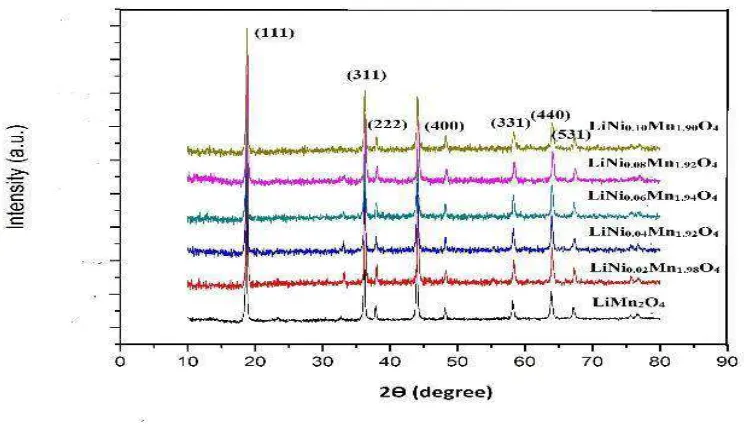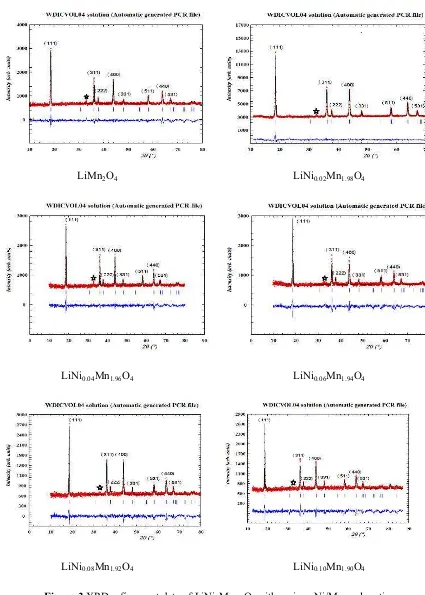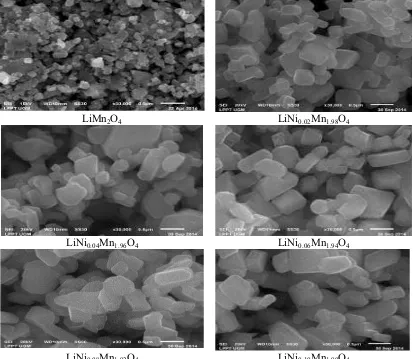This content has been downloaded from IOPscience. Please scroll down to see the full text.
Download details:
IP Address: 114.79.61.1
This content was downloaded on 04/06/2016 at 16:32
Please note that terms and conditions apply.
10th Joint Conference on Chemistry
View the table of contents for this issue, or go to the journal homepage for more
Editorial Materials (preface and photograph)
PREFACE
The 10th Joint Conference on Chemistry is an international conference organized by 4 chemistry departments of 4 universities in central java, Indonesia. The universities are Sebelas Maret University, Diponegoro University, Semarang State University and Soedirman University. The venue was at Solo, Indonesia, at September 8-9, 2015. The total conference participants are 133 including the invited
speakers. The conference emphasized
sustainable chemistry which covering the following topics:
-
Material innovation for sustainable goals
-
Development of renewable and sustainable energy based on chemistry
-
New drug design, experimental and theoretical methods
-
Green synthesis and characterization of material (from molecule to functionalized
materials)
-
Catalysis as core technology in industry
-
Natural product isolation and optimization
The conference speakers are:
10th Joint Conference on Chemistry IOP Publishing
IOP Conf. Series: Materials Science and Engineering107(2016) 011001 doi:10.1088/1757-899X/107/1/011001
Content from this work may be used under the terms of theCreative Commons Attribution 3.0 licence. Any further distribution of this work must maintain attribution to the author(s) and the title of the work, journal citation and DOI.
10th Joint Conference on Chemistry IOP Publishing IOP Conf. Series: Materials Science and Engineering107(2016) 011001 doi:10.1088/1757-899X/107/1/011001
This content has been downloaded from IOPscience. Please scroll down to see the full text.
Download details:
IP Address: 114.79.61.1
This content was downloaded on 04/06/2016 at 16:49
Please note that terms and conditions apply. Peer review statement
View the table of contents for this issue, or go to the journal homepage for more
Peer review statement
All papers published in this volume ofIOP Conference Series: Materials Science and Engineeringhave been peer reviewed through processes administered by the proceedings Editors. Reviews were conducted by expert referees to the professional and scientific standards expected of a proceedings journal published by IOP Publishing.
10th Joint Conference on Chemistry IOP Publishing IOP Conf. Series: Materials Science and Engineering107(2016) 011002 doi:10.1088/1757-899X/107/1/011002
Content from this work may be used under the terms of theCreative Commons Attribution 3.0 licence. Any further distribution of this work must maintain attribution to the author(s) and the title of the work, journal citation and DOI.
This content has been downloaded from IOPscience. Please scroll down to see the full text.
Download details:
IP Address: 114.79.61.1
This content was downloaded on 04/06/2016 at 16:52
Please note that terms and conditions apply.
Synthesis of LiNixMn2-xO4 by low-temperature solid-state reaction and its microstructure
View the table of contents for this issue, or go to the journal homepage for more
Synthesis of LiNi
xMn
2-xO
4by low-temperature solid-state
reaction and its microstructure
D Purwaningsih1,2*, R Roto1 and H Sutrisno2
1Department of Chemistry, Faculty of Mathematics and Natural Sciences, Gadjah
Mada University, Sekip Utara BLS 21, Yogyakarta 55584 Indonesia
2Department of Chemistry Education, Faculty of Mathematics and Natural Sciences,
Yogyakarta State University, Jl. Colombo 1, Yogyakarta 55281 Indonesia
*E-mail: [email protected] structure with a space group of Fd3m. The increase in the doping content does not affect the structure. The particle size of the products is about 150-500 nm. The crystallinity of the solids tends to increase with the increase in Ni content. However, the increase of Ni content in the product causes the lattice parameters of the unit cell to decrease.
1. Introduction
Lithium-ion batteries are widely used for energy storage, portable devices, and electric vehicles. Although many new cathode materials are developed, LiMn2O4 is still well recognized as a promising
cathode material for these batteries [1]. The spinel-structured LiMn2O4 offers attractive alternative
material over commercially available LiCoO2. LiMn2O4 is cheap, non-toxic, and safe [2]. However, it
has severe capacity fading in the application [3]. The charge-discharge cycling capability of LiMn2O4
at high temperatures can be improved by the substitution of Mn by other transition metals to give the corresponding LiMxMn2-xO4 where M = Co, Mg, Al, Cr, Ni, Fe, Ti and Zn [4]. LiNixMn2-xO4has a
discharge capacity of 140 mAhg-1 and open circuit potential of 4.7 V. This energy density is tunable
by doping [5].
It is documented well that electrochemical performance of the battery cathode is affected by the powder properties such as structure, particle size, grain morphology, specific surface area and crystallinity [6]. In addition to its large surface area, fast transport of mass and charge, there are many properties to explore. The large surface area and small particle size can improve solubility in the electrolyte. The alteration in chemical properties may make the electrode materials sensitive to the presence of impurities[7].
The electrochemical property of LiMn2O4–based spinel highly depends on its synthetic routes, such
as the Pechini process, sol-gel, emulsion method, the citric method [8], etc. However, most of these
10th Joint Conference on Chemistry IOP Publishing IOP Conf. Series: Materials Science and Engineering107(2016) 012033 doi:10.1088/1757-899X/107/1/012033
Content from this work may be used under the terms of theCreative Commons Attribution 3.0 licence. Any further distribution of this work must maintain attribution to the author(s) and the title of the work, journal citation and DOI.
methods involve many treatment processes or expensive reagent, which is time-consuming and high cost for commercial applications. We report here on the synthesis of series of LiNixMn2-xO4 using a
low-temperature solid-state reaction at various Ni/Mn mole ratios. The physical properties and microstructures of the synthesized materials were investigated.
2. Experimental Section
2.1. Synthesis of MnO2 and LiNixMn2-xO4.
An analytical grade of Mn(CH3COO)2 and Na2S2O8 (Aldrich) were used. All other chemicals were
used without further purification. In a typical synthesis, Mn(CH3COO)2 and Na2S2O8 with a molar
ratio of 1:1 were dissolved at room temperature in 80 mL deionized distilled water. The mixture was stirred to form a clear homogeneous solution. The solution was transferred to the flask and heated at 120 oC for 12 h. The obtained powder was subsequently dried at 300 oC for 1 h in the oven.
Synthesis of LiNixMn2-xO4. is the following; LiOH of 0.00143 moles, 0.0000286 moles of
Ni(CH3COO)2 and 0.0028314 moles were dispersed into high purity ethanol to form a thick slurry and
stirred. The product was separated and dried at room temperature. The above process was repeated three times. The LiNi0.02Mn1.98O4 powder was ignited at 750 oC for 10 hours. The same procedure was
followed for synthesizing the materials with different mole ratio.
2.2. Characterization of the LiNixMn2-xO4 microstructure.
The obtained MnO2 and LiNixMn2-xO4powders were analyzed using X-ray powder diffractometer
(XRD). The XRD patterns were obtained on Rigaku Miniflex 600-Benchtop XRD instrument using Cu Kα radiation (l = 1.5406 Å) at ambient temperature. The XRD instrument was set to operate at 40
kV and 15 mA. The XRD data was obtained with a 2ϴ interval ranging from 20o to 90o. The Rietveld
analysis was conducted with the Fullprof software package [9] to refine the X-ray diffraction data. The refined parameters are a unit cell, scale factor and full width at half-maximum (FWHM). The SEM images were obtained using JEOL JSM-6510LASEM. The effect of the nickel content on the structure of LiMn2O4 was studied using energy dispersive X-ray spectroscopy (EDX). The EDX analysis was
also used to analyze the presence of Mn, O and Ni elements in the prepared materials. The Brunauer-Emmett-Teller (BET) data was collected based on adsorption data in relative pressure (P/Po) of about 0.30 [10]. The BET calculation was done in ASAP 2020 V4.01 software from Micrometrics.
3. Results and discussion
3.1. XRD Patterns
Figure1 shows XRD patterns of produced LiNixMn2-xO4. High peak intensity suggests that the
LiNixMn2-xO4 has good crystallinity. Figure 2 shows the variation of the lattice constant of the
materials with different compositions. The Rietveld refinement data obtained using Full Prof indicates that lattice parameter decreases with the increase in doping content. The substitution of Mn3+ by Ni2+
in the octahedral sites leads to the decrease in the lattice parameters. Note that ionic radius of Ni2+ is
0.560 Å, smaller than that of Mn3+, which is 0.645 Å. The difference in the ionic radius between Ni2+ and Mn3+ is small, therefore only a few of change the lattice parameter.
10th Joint Conference on Chemistry IOP Publishing
IOP Conf. Series: Materials Science and Engineering107(2016) 012033 doi:10.1088/1757-899X/107/1/012033
Figure 1. XRD Patterns of LiNixMn2-xO4 Ni/Mn mole ratios
Figure 2. Variation of lattice parameter with x in LiNixMn2-xO4
Figure 3 shows the XRD patterns of LiNixMn2-xO4. The products have a cubic phase with space group
of Fd3m as indicated by results of analysis using winPLOTR package program and Diamond. The results of Rietveld are shown in Fig. 3. The experimental points are given as dot (.) and theoretical data are shown as solid line. The difference between theoretical and experimental data is shown as a bottom line. The vertical lines represent the Bragg’s allowed peaks. The X-ray diffraction data show at 31-33o, which can be assigned to a Mn
2O3 phase. The presence of Ni in the structure causes the
appearance of NiMnO3, which is indicated by the presence of the peaks at 31-33o [11]. It seems that
lithium ions occupy the tetrahedral (8a) site. After the modification, the lattice shrinkage is due to the smaller ionic radii of Ni2+, which replaced the Mn3+ at 16d sites. On the other hand, Ni2+ substituting
part Mn3+ can enhance the content of Mn4+ to keep the charge balance, and Mn4+ is with smaller ionic
radii than that of Mn3+ [12]. Oxygen atoms are arranged in the cubic-closed packing 32e.
10th Joint Conference on Chemistry IOP Publishing
IOP Conf. Series: Materials Science and Engineering107(2016) 012033 doi:10.1088/1757-899X/107/1/012033
LiMn2O4 LiNi0.02Mn1.98O4
LiNi0.04Mn1.96O4 LiNi0.06Mn1.94O4
LiNi0.08Mn1.92O4 LiNi0.10Mn1.90O4
Figure 3 XRD refinement data of LiNixMn2-xO4 with various Ni/Mn mole ratios
10th Joint Conference on Chemistry IOP Publishing
IOP Conf. Series: Materials Science and Engineering107(2016) 012033 doi:10.1088/1757-899X/107/1/012033
Figure 4. Microstructure of LiNi0.1Mn1.9O4
3.2. SEM Images
LiMn2O4 LiNi0.02Mn1.98O4
LiNi0.04Mn1.96O4 LiNi0.06Mn1.94O4
LiNi0.08Mn1.92O4 LiNi0.10Mn1.90O4
Figure 5. SEM photographs of LiNixMn2-xO4
10th Joint Conference on Chemistry IOP Publishing
IOP Conf. Series: Materials Science and Engineering107(2016) 012033 doi:10.1088/1757-899X/107/1/012033
The SEM images of the synthesized powders are shown in Figure 5. The average particle size of the nickel-doped samples is smaller than that of undoped LiMn2O4. The doping of LiNixMn2-xO4 with
Ni cause the tendency of nucleation process overcomes the tendency of crystal growth. The Ni-doped LiMn2O4 powders have irregular particle size. The particle sizes of LiNixMn2-xO4 are in the range of
150 to 500 nm. The increase in the nickel doping leads to increase in LiMn2O4 particle size. The
morphology is almost similar.
Figure 6. BET surface area of LiNixMn2-xO4 Figure 7. Variation of the average particle size
with x in LiNixMn2-xO4
Figure 6 shows the BET surface area of LiNixMn2-xO4 at various mole ratios. The addition of Ni
does not change the BET surface area. However, at a mole ratio of 0.08, there is a noticeable change in the BET surface area from 6 m2/g to 11 m2/g. Figure 7 shows the average particle size of the material. The particle size is in the range of 200-900 nm (Table 1). At low doping content, the particle size is relatively constant until it reaches x = 0.04. For x>0.04, the particle size decreases along with the increase of doping agent.The particle size is about 300 nm for x = 0.08. Good battery performance requires small particle size of cathodes [13]. In general, the particles have a rod shape. The particles are also agglomerated. The agglomerated particles might be beneficial for the production of lithium-ion batteries with high energy capacity [14]. A further test of the energy capacity of LiNi0.08Mn1.92O4 is
required. Calculation using Debye-Scherer equation gives crystallite size of LiMn2-xO4 in the range of
30-40 nm. The particle size obtained from the calculation (**) is around 200-900 nm.
Table 1. The crystallite size of the prepared materials as calculated by Debye-Scherer method, D, and the particle size as calculated from BET surface area
IOP Conf. Series: Materials Science and Engineering107(2016) 012033 doi:10.1088/1757-899X/107/1/012033
4. Conclusion
LiNixMn2-xO4 has been synthesized by the low-temperature solid-state reaction. The LiNixMn2-xO4
powders have a cubic crystal structure with an Fd3m space group. The particle size of the prepared
materials is not homogeneous. Doping with Ni leads to changes in size, crystallinity, and microstructure of the products. The average particle size of LiNixMn2-xO4 is about 150-500 nm. The
crystallinity of the materials tends to increase with the increase in the Ni doping content. When Ni content in the compound increases, the lattice parameters decrease.
References
[9] Roisnel T and Ridriguez-Carvajal L 2001 in WinPLOTR a graphic tool for powder diffraction,
CNRS-Lab. De Chimie du solide et inorganique moleculaire Universite de Rennes [10] Brunauer S, Emmett P H and Teller E 1938 J. of the American Chemical Society 3 309-319
[11] Purwaningsih D, Roto R, Narsito and Sutrisno H 2015 Advanced Materials Research 1101
134-137
[12] Li X 2009 Journal of Alloys and Compounds 479 310-313
[13] Wang F X, Xiao S Y, Shi Y, Liu L L, Zhu Y S, Wu Y P, Wang J Z and Holze R 2013 Spinel LiNixMn2-xO4 as cathode material for aqueous rechargeable lithium batteries
http://ro.uow.edu.au/aiimpapers/608
[14] Yi T, Xie Y, Ye M, Jiang L, Zhu R and Zhu Y 2011 Ionics 17 383-389
10th Joint Conference on Chemistry IOP Publishing
IOP Conf. Series: Materials Science and Engineering107(2016) 012033 doi:10.1088/1757-899X/107/1/012033



